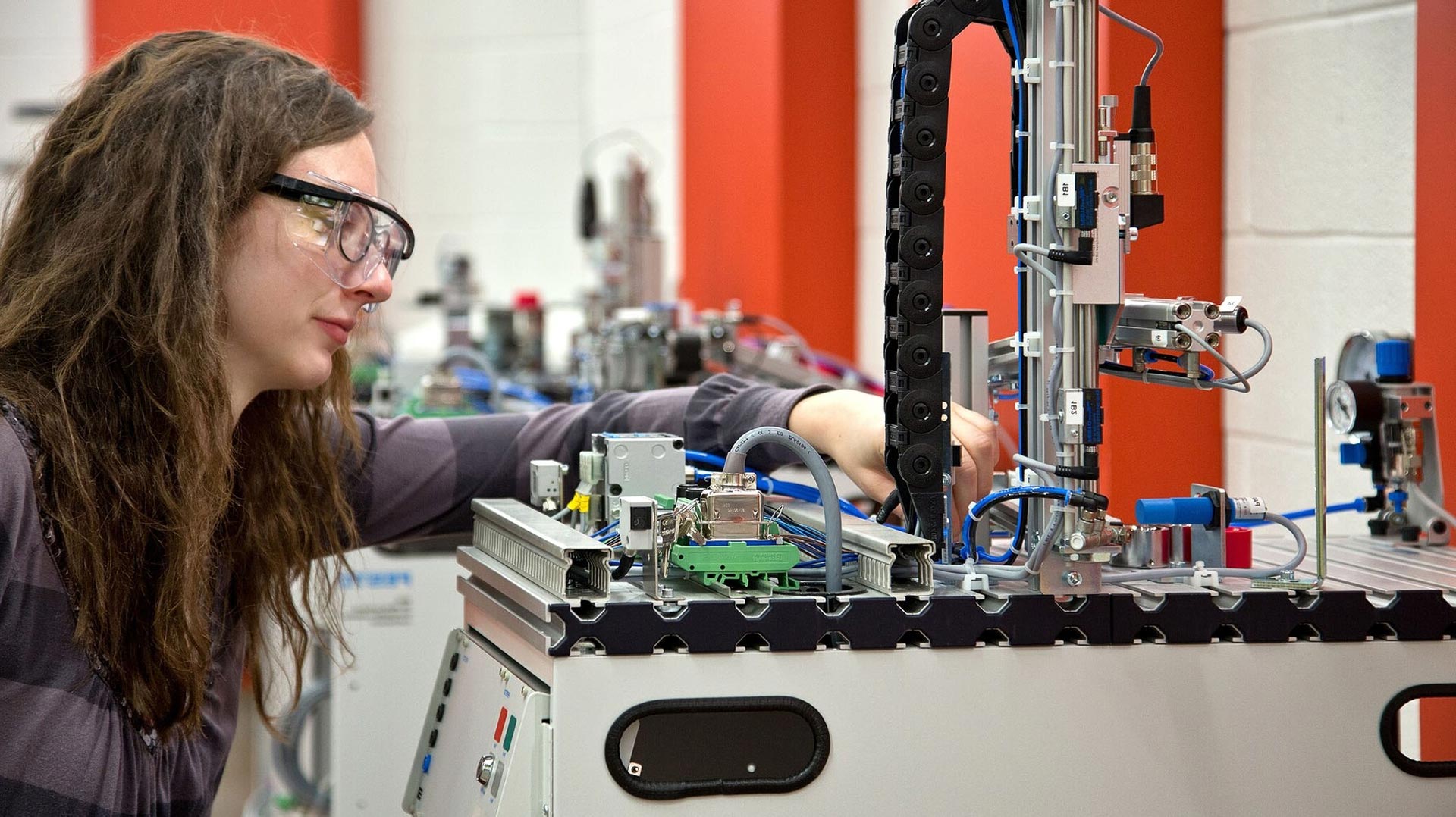This Seneca program has been validated by the Credential Validation Service as an Ontario College Credential as required by the Ministry of Colleges and Universities.
Electromechanical Engineering Technology - Automation
Program Learning Outcomes
As a graduate, you will be prepared to reliably demonstrate the ability to:
- Fabricate and build electrical, electronic, and mechanical components and assemblies in accordance with operating standards, job requirements, and specifications.
- Analyze, interpret, and produce electrical, electronic, and mechanical drawings and other related technical documents and graphics necessary for electromechanical design in compliance with industry standards.
- Select and use a variety of troubleshooting techniques and equipment to assess, modify, maintain, and repair electromechanical circuits, equipment, processes, systems, and subsystems.
- Modify, maintain, and repair electrical, electronic, and mechanical components, equipment, and systems to ensure that they function according to specifications and to optimize production.
- Design and analyse mechanical components, processes, and systems by applying engineering principles and practices.
- Design, analyze, build, select, commission, integrate, and troubleshoot a variety of industrial motor controls and data acquisition devices and systems, digital circuits, passive AC and DC circuits, active circuits and microprocessor-based systems.
- Install and troubleshoot computer hardware and programming to support the electromechanical engineering environment.
- Analyse, program, install, integrate, troubleshoot and diagnose automated systems including robotic systems.
- Establish and maintain inventory, records, and documentation systems to meet organizational and industry standards and requirements.
- Select and purchase electromechanical equipment, components, and systems that fulfil job requirements and functional specifications.
- Specify, co-ordinate, and apply quality-control and quality-assurance programs and procedures to meet organizational standards and requirements.
- Work in compliance with relevant industry standards, laws and regulations, codes, policies, and procedures.
- Develop strategies for ongoing personal and professional development to enhance work performance and to remain current in the field and responsive to emergent technologies and national and international standards.
- Contribute as an individual and a member of an electromechanical engineering team to the effective completion of tasks and projects.
- Design and analyze electromechanical systems by interpreting fluid mechanics and the attributes and dynamics of fluid flow used in hydraulic and fluid power systems.
- Contribute to project management through planning, implementation and evaluation of projects, and monitoring of resources, timelines, and expenditures as required.
- Design, modify, and maintain automated electromechanical equipment, components, systems and subsystems to maintain applications including mechanical, electrical, and instrumentation.
- Design electromechanical processes for electromechanical devices and components by applying automation/control systems concepts.
